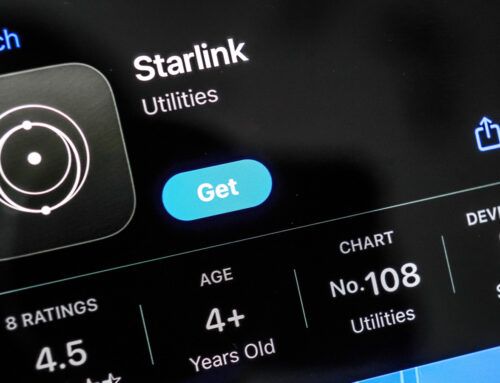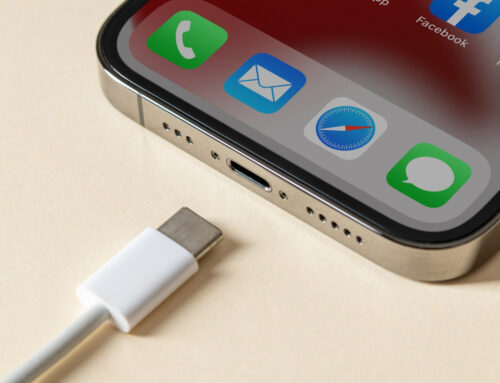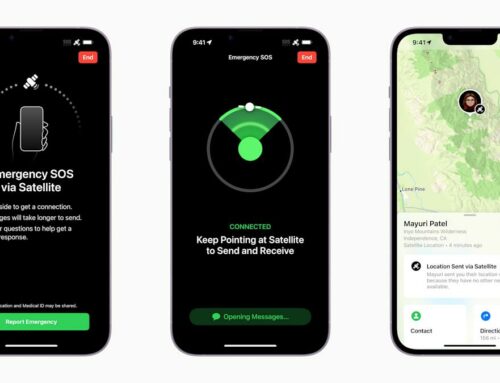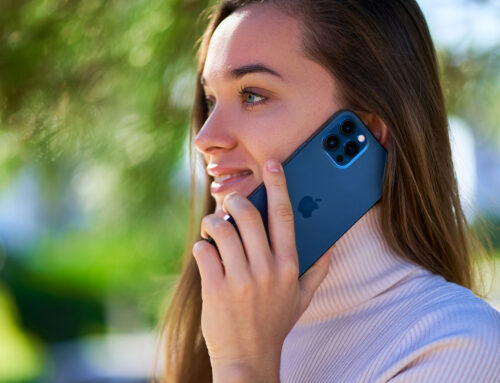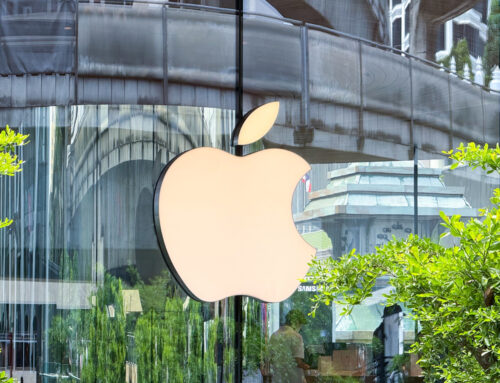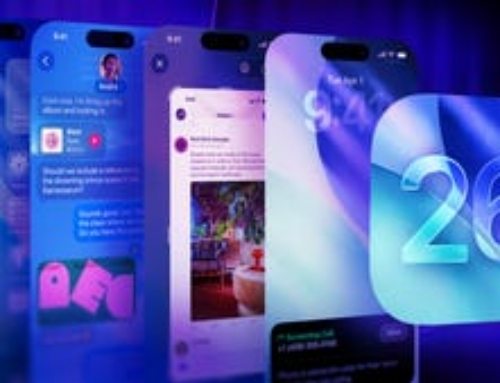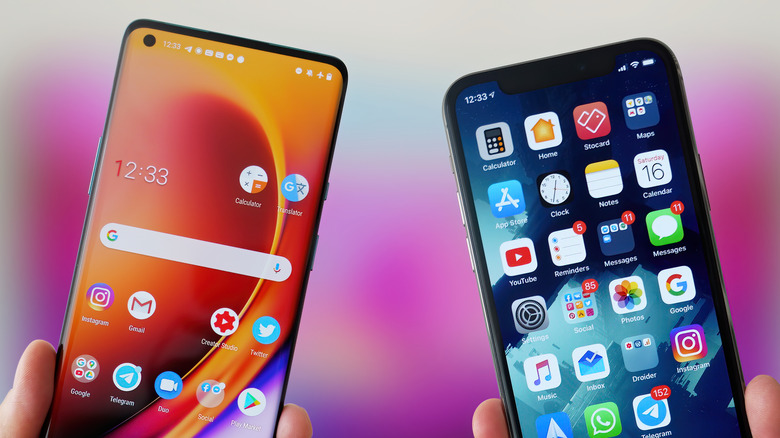
Mr.Mikla/Shutterstock
The iPhone vs Android battle is almost as old as their parent companies, and there never really seems to be a clear winner — personal preferences remain the ultimate determinant for which camp users choose. But when it comes to deciding whether to choose an Android or iPhone as your business device, there’s more at stake than personal convenience. Your choice will affect the daily productivity and ultimately, profitability of your business.
There are several things to consider before choosing an Android or iOS business device: How difficult would it be to set up for your team? Does it fit into your budget? Which one provides better integration and support for your existing processes? Which facilitates better sync and synergy and is easier to manage administratively?
Now, both iPhone and Android devices can deliver on these fronts to varying extents, but they also have some peculiar limitations that are important to take into consideration before making a decision. To help you determine which one is the best fit for your business, we’ll compare the pros and cons on each side, focusing on the most important factors: interoperability, app compatibility, mobile device management, price, and storage.
Existing app ecosystem

Tada Images/Shutterstock
You want to think about the network of apps you currently use for your business, as well as those you might need going forward. Your decision will be informed by which platform these apps are available on, as well as which is more compatible with said apps. These days, most major apps are available in both Android and iOS versions, but you still want to consider a few factors that determine the quality of apps available on each platform.
For example, apps still tend to arrive at Apple’s App Store before Android’s Google Play Store. This is because iOS is a more homogenous and controlled platform than Android, which makes it easier for developers to optimize and deploy apps for the system.
On the other hand, Android app development is a harder and messier task. Because of the diversity of experience across different Android device manufacturers, developers have to factor in a wide range of technical specifications. There are simply too many variations across the board — different Android phones can have different screen resolutions, custom skins, hardware, and basic OS requirements — so it’s almost impossible to optimize apps to perform excellently on every Android device.
Also, you’re more likely to find subpar apps on the Android Play Store than on the App Store. Google used to have shockingly low barriers for developers to publish apps to the Play Store. The company has since ramped up its standards, but there are still several substandard (and potentially dangerous) ones from those years of uncensored access. The App Store does not have the same problem — applications for Apple devices have always gone through a moderator for quality control and verification before they are published on the App Store. So, in terms of app availability and quality, iOS trumps Android.
Mobile Device Management
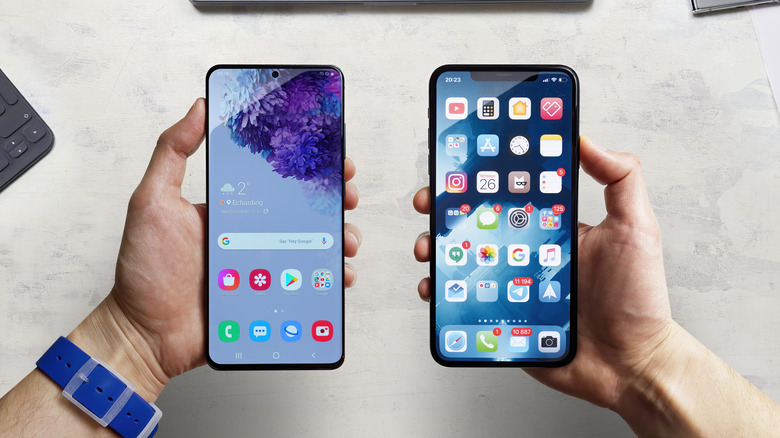
Mr.Mikla/Shutterstock
The next key factor you want to consider is which platform allows for hassle-free management and administration of all your business devices. From an administration perspective, both Apple and Android provide similarly functional MDM solutions, but there are several distinct differences between the two that you must know.
Generally, a solid MDM must allow you to simplify and streamline a couple of corporate tasks. These are the most important factors you’d typically need to take into account when choosing one:
-
Onboarding. How easy would it be to enroll users in the system? Can you customize configurations on multiple devices in batches?
-
Containerization. Can employees create and maintain separate profiles for work and personal data on their devices? This is especially important if you’re running a BYOD arrangement.
-
Resource sharing. Are there provisions for content distribution? For example, can you distribute and configure approved apps and settings to devices on the network?
-
Profile management. MDMs should let you configure profiles based on specific preferences. You want to be able to regulate access and permissions for each employee based on criteria such as their roles or departments.
-
Security. A solid MDM will simplify processes such as installing updates across all devices, and provide more security features such as remote locking (in cases of loss or theft), multi-factor authentication, data encryption, etc.
Now let’s see how Android compares to iOS on these fronts.
Android vs iOS MDM
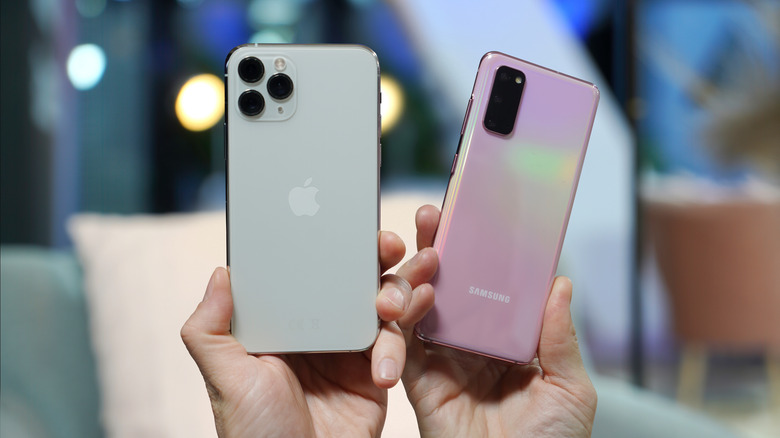
Mr.Mikla/Shutterstock
Apple gained a head start over Android because it fitted its devices with MDM capabilities since the release of iOS 4 in 2010.
As for Android, the sheer variety of manufacturers and devices amounted to fragmentation, and that used to be an IT nightmare. However, Google alleviated that problem with the release of a resource called Android Enterprise Recommended in 2018. It contains a list of devices and services optimized for enterprise, with helpful details such as update frequency, OS requirements, screen size, storage options, and what kind of industry they’re suitable for.
Both Android and iOS allow contactless enrollment to a company’s server, and you can easily automate profile and access configurations on both platforms as well. There’s a rider though: this is only true of devices purchased from approved resellers. This means you might lose the functionality if you’re operating a BYOD fleet since there’s no guarantee that all your employees would have gotten their devices from such.
Speaking of, iPhones trump Androids when it comes to BYOD. Again, the wealth of options available on the Android market is a downside in this regard — no BYOD program could possibly support the many varieties of Android devices your employees might own. For the same reason, it’s difficult to keep up with updates for an Android fleet — different manufacturers release OS updates and security patches at different intervals.
With iPhones, on the other hand, there’s a limited number of devices to choose from, so BYOD programs are much simpler to manage. Also, because the OS is homogenous, updates are simpler and more consistent.
One aspect where Android shines, however, is containerization. With Google’s Android for Work, users can create a clean distinction between personal and work profiles, segregating apps, content, and other resources.
Interoperability

Teguhjatipras/Getty Images
Android does better than iOS when it comes to interacting with other devices. iPhones are notorious for being exclusive with functionalities, which is possible because iOS is solely owned and controlled by Apple, so the company gets full control of its design and features. For example, iMessage, the company’s proprietary messaging service, is very functional until you have to message an Android user, then the experience becomes buggy and outdated. There has been much pressure on Apple to fix the experience, but there’s been no progress on that front.
But this exclusivity makes for great integration in Apple’s ecosystem — iPhones work very seamlessly with other Apple devices. For example, you can quickly transfer data swiftly between devices via AirDrop, even without an internet connection. With Handoff, you can work on the same project on all your different Apple devices, or copy and paste from one Apple device to another.
Android works better with different devices, but since manufacturers add different tweaks to the OS, this also means integration is not as seamless as it is on the iPhone. For example, there’s no task continuity if you begin a project on a Samsung Galaxy and want to finish it on a Dell or Asus laptop. Although Google Workspace provides some interoperability on Android — you can use Google Drive as cloud storage and access data from different devices — the experience is not as smooth as it is on the iPhone.
Price and Storage
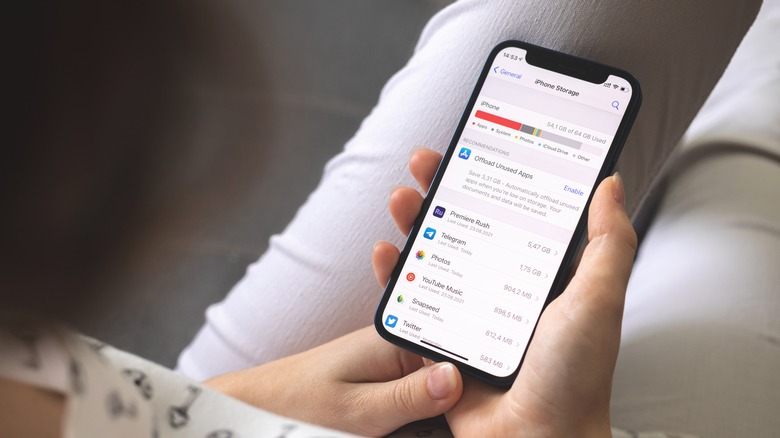
FellowNeko/Shutterstock
Both Android devices and iPhones cost about the same if you’re going for high-end models, but Android offers a wider range of price options. On the other hand, iPhones offer a higher level of quality and reliability which makes them a better long-term investment especially if you’re creating a legacy fleet. iPhones also tend to hold their value better than Android devices, so they’re a more attractive option if you plan on reselling or upgrading in the future.
These days, one major factor that determines the eventual cost of a smartphone is its storage. Both Android and iPhones come in a variety of models, with prices increasing in proportion to their storage capacity. A 256GB smartphone will cost more than a 128GB variant, which would be more expensive than a model with only 64GB of space.
But one advantage that most (not all) Android phones have over iPhones is the potential to expand storage. While many new devices have storage options that start at 128GB, some Android smartphones allow users to increase the phone’s storage by adding microSD cards. There’s no such workaround on iPhones, and you’d have to spend a few extra hundred bucks for more storage.
At the end of the day, the choice between Android and iPhone for business is yours to make. iPhones have a lot going for them because of the homogeneity, but you can make Android work efficiently if you go in with the right info, and the Android Enterprise Recommended resource can help you with that. There’s no wrong answer — both of them have their pros and cons and can be great as corporate devices, but we hope this article helped you hone in on which of them is best for your business. That’s the most important distinction to make.


